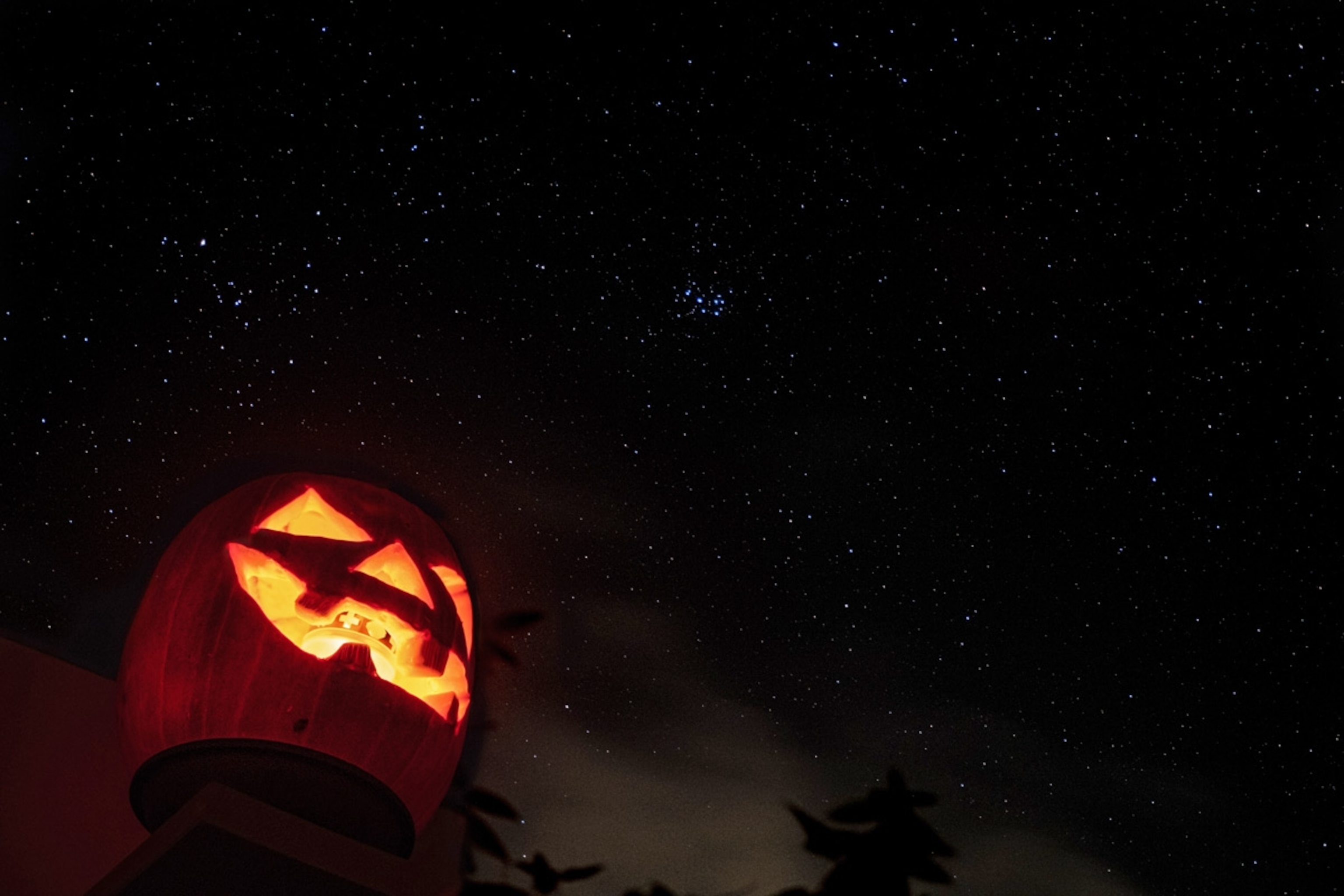
Spooky sky-watching for Halloween
Here’s how families can check out cosmic monsters and ghouls while trick-or-treating.
Even though trick-or-treaters will often be looking down into their bags to see what kind of candy they scored, looking up will give them a treat as well. Two minor meteor showers—the Northern and Southern Taurids—will peak around Halloween night and send eye-catching fireballs across the sky.
In fact, the night sky is filled with all sorts of cosmic monsters, ghouls, and giants this time of year, if you know where and when to look. Check out these stargazing treats—all of which can be seen with the naked eye—your little ghouls and goblins can find if they dare to gaze up.
Cetus the sea monster
With the head of a dragon and the body of a fish, Cetus is a terrifying monster in Greek mythology that was slain by Perseus while rescuing Andromeda. (She had been chained to a rocky shore as a sacrifice to Cetus.)
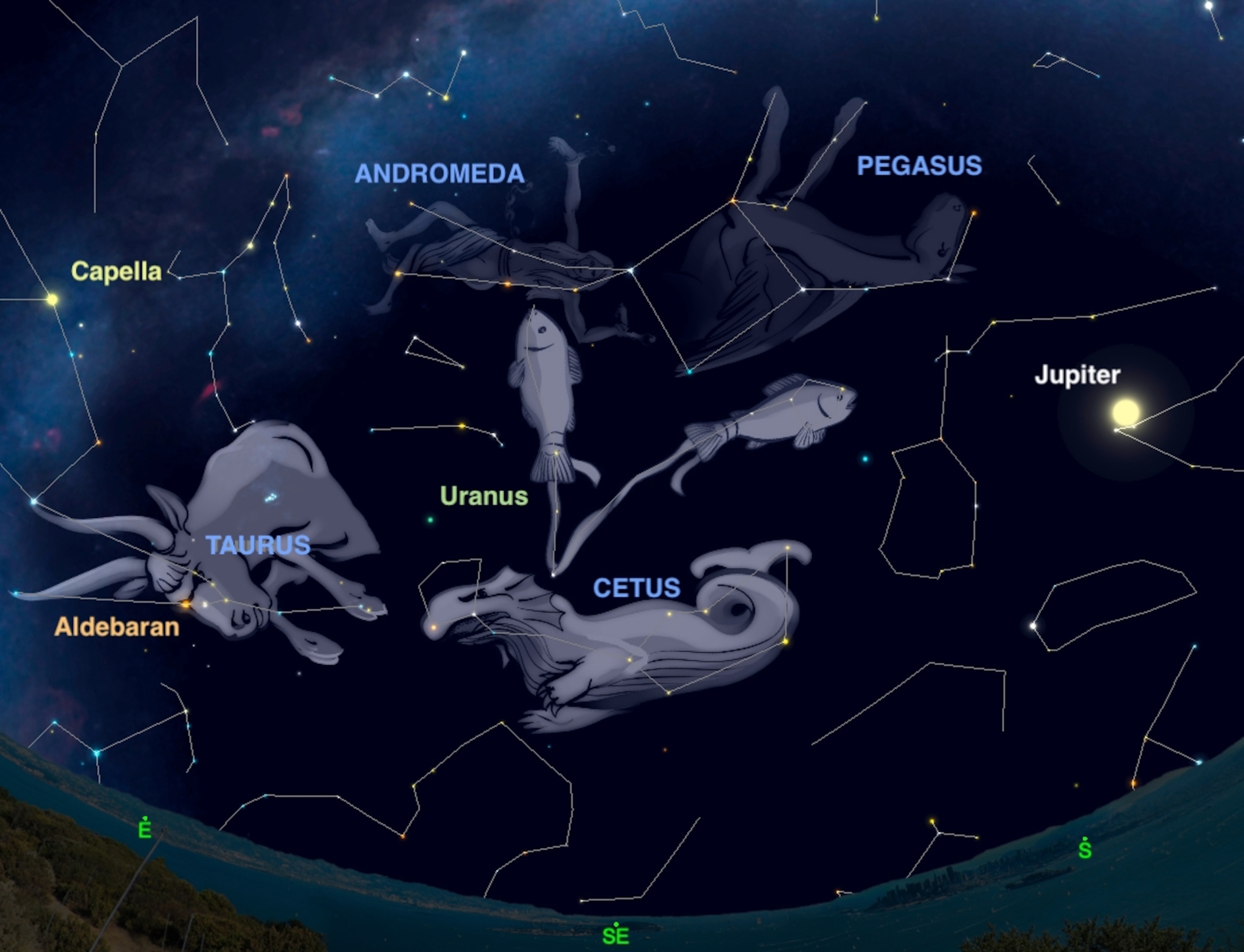
In the night sky, Cetus is a giant among constellations. The cluster of stars spans a large part of the sky, just below the constellation Pegasus the winged horse and to the right of Taurus the bull. To spot this aquatic giant, face southeast during early evening and measure about two fist-widths up from the horizon. You’ll be looking at the brightest stars of Cetus the sea monster.
Uranus, the green giant
Floating above Cetus’s head, Uranus has a thick atmosphere filled with cold methane gas that gives it its ghoulish green color. When searching, give your kids a hint that it’s the only green body in the night sky.
The seventh planet from the sun is also pretty far away, sitting 1.7 billion miles (2.8 billion kilometers) from Earth. (That means kids are actually seeing it as it appeared 2.5 hours ago, because that’s how long it takes for its light to reach our eyes.) Because it’s so faint, binoculars will definitely help in your hunt for this giant.
Draco the dragon
You’re probably familiar with the Big Dipper, but in the same northern region of the sky is a long, winding group of stars called Draco, the dragon constellation. (Draco means “dragon” in Latin; the creatures appear in many ancient Greek myths, such as when Hercules slays one to steal some golden apples.) The constellation is easiest to spot in the later hours, left of Polaris (the North Star) and above the Big Dipper.
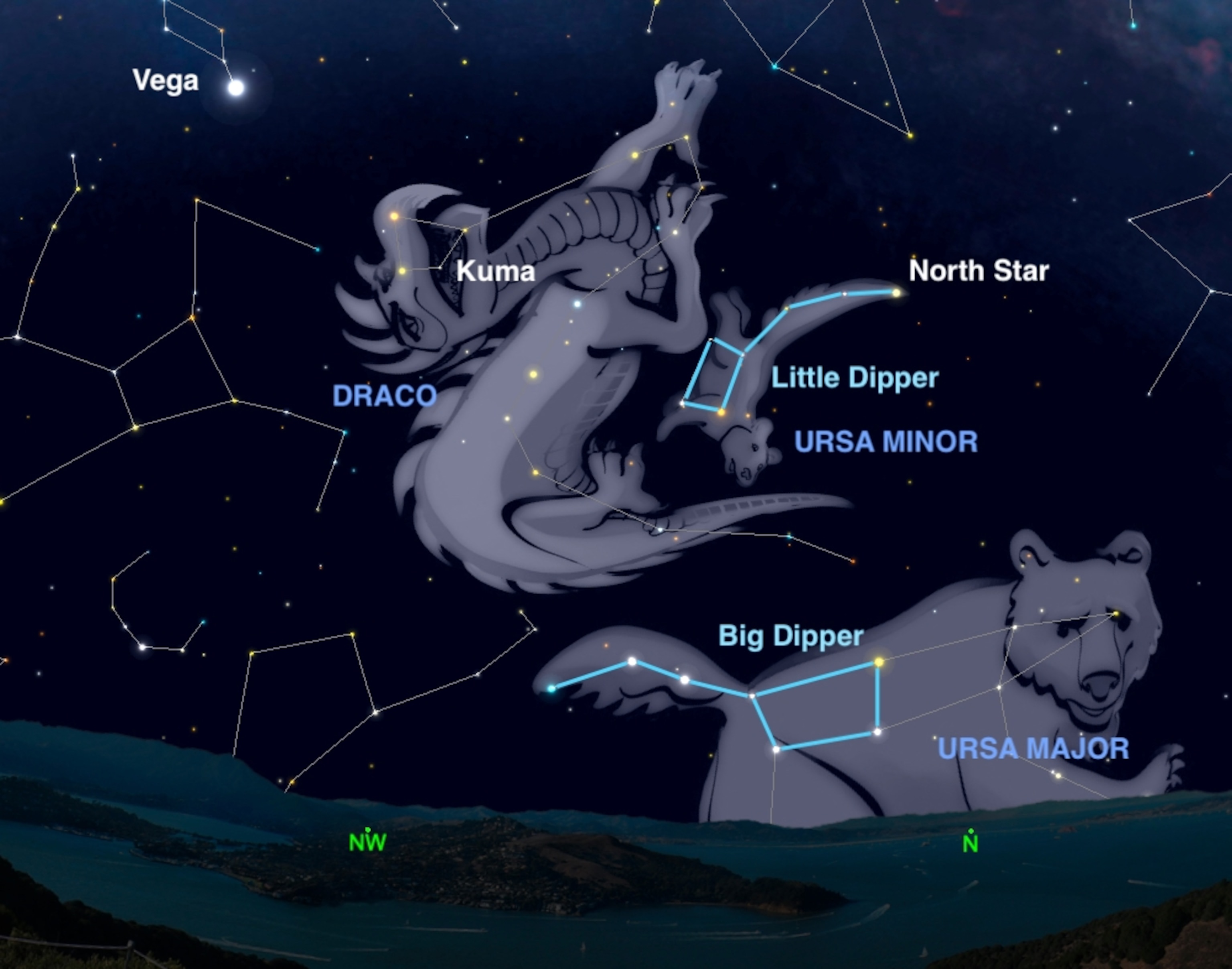
The easiest part of Draco to hunt down is its head. Shaped like an irregular rectangle about half the size of the Big Dipper’s bowl, these four stars are visible to the naked eye. But look through binoculars, and kids can see the faintest one—named Kuma—is actually two stars. Called a double star, these twins are actually about 11 times brighter than our own sun, but because they’re more than 120 light-years away, they look very faded.
Algol the ghoul’s head
This star represents the eye of the legendary snake-headed monster Medusa, said to turn anyone who looked her way into stone. But what makes Algol so eerie is that it appears to wink at us.
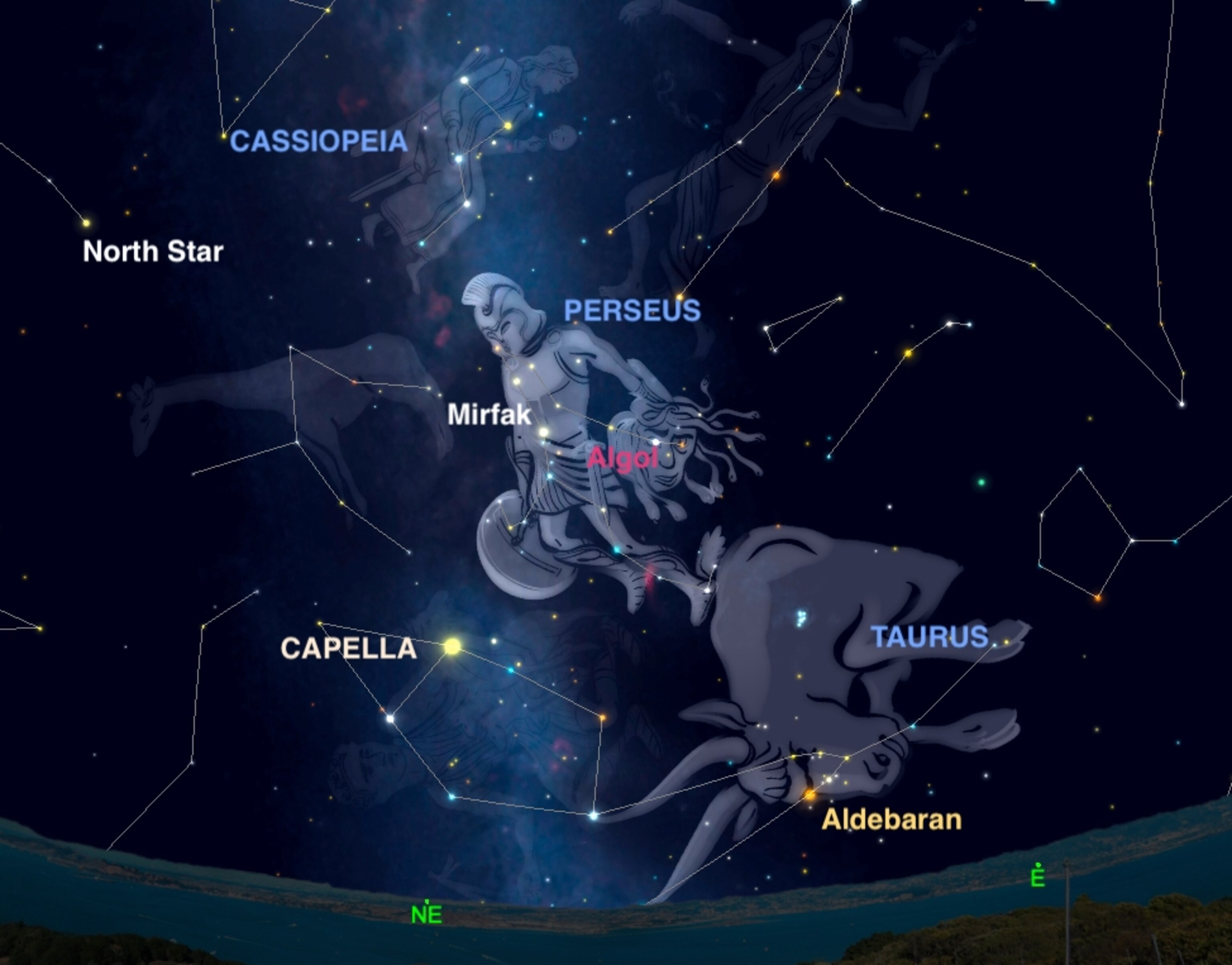
Algol, which means “ghoul’s head” in Arabic, sits 93 light-years away and is actually two stars, one fainter than the other, that circle each other. From Earth, the two stars line up so that one eclipses the other, making it appear to fade and brighten.
You can easily hunt down the spooky star in the constellation Perseus, which looks like a lopsided K and is near the W-shaped constellation Cassiopeia and the bright star Capella. Algol is located along one of the upper arms just a few degrees from the bright star Mirfak.
Betelgeuse
Pronounced like the demonic movie character Beetlejuice, this monstrous star is actually a giant red sun 500 light-years away. Marking the right shoulder of the Orion constellation (you likely know the mythical hunter’s three-starred belt), Betelgeuse is easy to spot by its orange-red color.
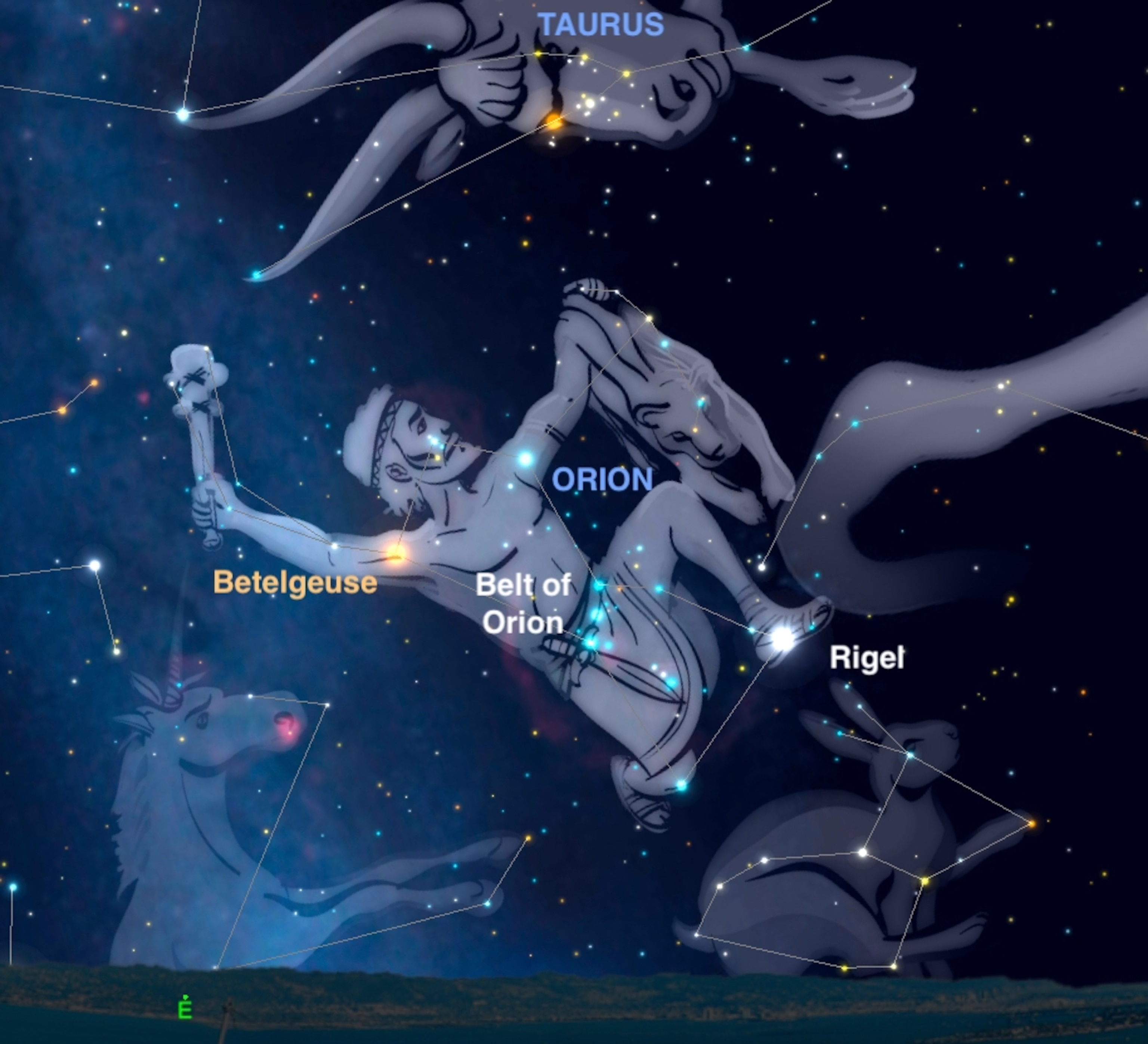
This spooky star is one of the largest known in the galaxy. It’s so big that if our sun was replaced with Betelgeuse, its outer edges would extend out to Jupiter and burn up Earth in its fiery belly. Betelgeuse is considered a dying star, and though it likely won’t happen for another 100,000 years or so, it will eventually go out in a blast called a supernova. This explosion will be as bright as the full moon, and even visible during the daytime for a few weeks.
Andrew Fazekas, the Night Sky Guy, is the author of Star Trek: The Official Guide to Our Universe and the second edition of Backyard Guide to the Night Sky. Follow him on Twitter, Facebook, and YouTube.



